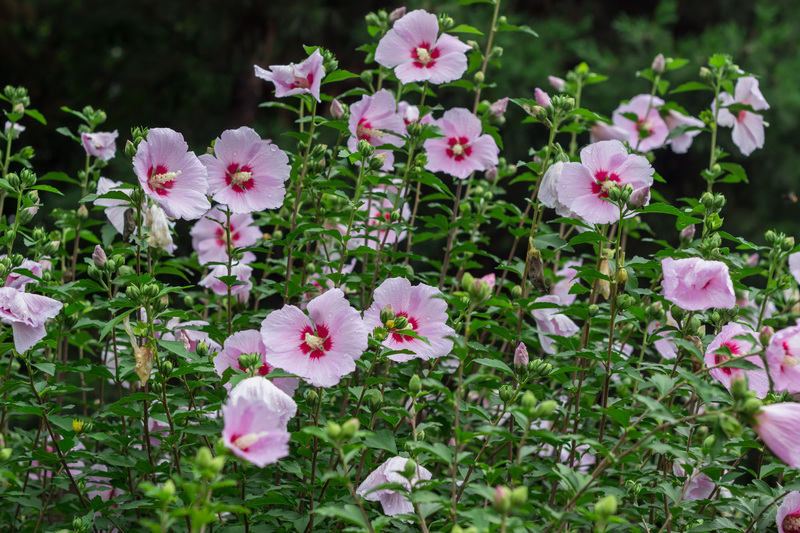Designing a Garden That's Both Child-Friendly and Fun
Posted on 20/08/2025
Designing a Garden That's Both Child-Friendly and Fun: The Complete Guide
Are you looking to create a garden that's both child-friendly and fun? Whether you have a spacious backyard or a cozy urban space, designing a garden that caters to children and adults alike can foster creativity, learning, and hours of outdoor enjoyment. In this comprehensive guide, you'll discover practical tips, innovative ideas, and safety essentials for cultivating a garden that's attractive, safe, and engaging for kids of all ages.
Why Your Garden Should Be Both Child-Friendly and Fun
Creating a garden with children in mind is about more than just adding play equipment. A thoughtfully designed child-friendly garden encourages exploration, provides a safe space to play, supports physical and mental development, and instills a love of nature. A fun, interactive garden offers children:
- Physical exercise through play and gardening activities
- Learning opportunities about plants, insects, and the environment
- Safe and secure outdoor space to build confidence
- Space for creativity, discovery, and relaxation

Essential Elements for a Child-Friendly Garden
Designing a child-friendly and fun garden requires careful consideration of safety, accessibility, interaction, and aesthetics. Let's explore the core elements step-by-step:
1. Safety First: Kid-Proofing Your Garden
- Fencing and Boundaries: A secure fence helps keep young children within safe limits and deters unwanted visitors. Use sturdy yet visually appealing fencing that fits your landscape design.
- Safe Surfaces: Swap gravel, sharp stones, or uneven paving for soft, impact-absorbing surfaces. Bark chips, rubber matting, or lush lawns offer gentle landing for active play.
- Plant Selection: Avoid toxic, spiny, or allergenic plants. Prioritize non-toxic, resilient plants that can withstand a little rough and tumble.
- Tool and Chemical Storage: Store tools, fertilizers, and chemicals in locked sheds or cabinets--far from curious little hands.
- Shade and Shelter: Incorporate spots for shade (like trees, pergolas, or shade sails) to provide sun protection and a cool hangout.
2. Engage All the Senses
A magical, fun garden for kids should stimulate sight, smell, touch, taste, and hearing:
- Visual: Choose bright, colorful flowers, interesting foliage, and playful garden features.
- Tactile: Include grassy areas, fuzzy-leaved plants, sandpits, and textured paths.
- Smell: Fragrant herbs (mint, rosemary, lavender) or scented flowers add delight to the air.
- Taste: Plant edibles like strawberries, cherry tomatoes, or peas for snacking straight from the vine.
- Sound: Wind chimes, rustling grasses, or water features make the garden soothing and inviting.
Creative Ideas for a Child-Friendly and Fun Garden
Play Zones for All Ages
Designate specific play areas in your garden. This not only organizes spaces for fun and relaxation but can enhance safety. Here are some standout ideas:
- Sand and Water Play: Sandpits and splash zones are essential for interactive, sensory fun. Add a small, child-safe water feature or a mud kitchen for endless creative play.
- Climbing and Hiding Spaces: Incorporate treehouses, climbing frames, tunnels, or tipis made from natural materials. Even a dense shrub or willow dome offers a secret haven.
- Outdoor Chalkboard: Mount a weatherproof chalkboard on a fence for artistic expression that washes away in the rain.
- Obstacle Courses: Set up stepping stones, balance beams, or hopscotch squares. Change the layout to keep things fresh and exciting.
- Mini Sports Area: Mark out a mini soccer pitch or basketball hoop for team play and active fun.
Grow-Your-Own Adventure Gardens
Encourage children to connect with nature by giving them their very own garden plot, containers, or raised beds. Let kids select and plant seeds, water regularly, and enjoy the fruits of their labor!
- Edible Patch: Grow child-friendly vegetables and fruit--think carrots, lettuce, radishes, strawberries, and blueberries.
- Herb Spiral: A spiral bed of herbs is a visually striking element that's also educational and sensory-rich.
- Sunflowers for Giants: Tall, cheerful sunflowers can transform an ordinary corner into a dazzling, immersive playworld.
Wildlife-Friendly Features
- Butterfly and Bee Gardens: Plant nectar-rich flowers, build bug hotels, or pile up logs and stones for beneficial insects.
- Bird Feeders and Baths: Children love watching birds visit their gardens. A window-view feeder can help spark a lifelong interest in wildlife.
Creative Quiet Corners
Even in energetic, fun gardens, kids value a serene spot to read, reflect, or daydream. Add:
- Reading teepee or den with cushions and blankets for peaceful downtime.
- Hammocks nestled between trees or a shady bench beneath a fragrant climbing rose.
Making Your Child-Friendly Garden Sustainable
A child-safe and fun garden can also serve as a model for environmental awareness and stewardship. Try these sustainable practices:
- Composting: Set up a compost bin or heap and teach kids how to recycle kitchen and garden waste into rich soil.
- Conserving Water: Collect rainwater in barrels for watering plants. Use mulch to reduce evaporation in beds.
- Native and Drought-Resistant Plants: Choose local species that require less maintenance and support native wildlife.
- Organic Methods: Avoid chemical fertilizers or pesticides and teach kids about natural garden care.
Garden Design Principles for Child-Friendly Fun
Layout and Flow
An effective child-friendly garden layout balances structure with adventure. Try these strategies for a seamless flow:
- Clear Lines of Sight: Adults should be able to watch children easily from patios, kitchens, or bedrooms.
- Paths and Trails: Winding paths made from stepping-stones, gravel, or bark lure children to explore and make excellent circuits for riding bikes or scooters.
- Zones with Purpose: Divide your garden into activity, edible, relaxation, and wild life areas. Use raised beds or planters to separate zones safely.
- Flexible Spaces: Create multi-use areas that can change as your children grow or as interests shift.
Choosing Age-Appropriate Features
The ideal fun and safe garden for children evolves with your family:
- Toddlers: Prioritize enclosed, padded play spaces, simple planting beds, and brightly colored objects to capture attention.
- School-Aged Children: Incorporate complex play equipment, digging zones, wildlife features, and their own garden plots.
- Teens: Add hangout spaces like fire pits, outdoor beanbags, or sports courts alongside vegetable gardens for healthy snacking.
Materials and Finishes
Select materials that are robust, weather-resistant, and low-maintenance:
- Timber: Smoothly sanded and treated to avoid splinters
- Stone or Brick: Use for raised beds or paths--stick to non-slip finishes
- Metal: Powder-coated options for durability, avoid sharp edges
- Plants: Favor thick, sturdy, and non-toxic choices
Plants to Choose (and Avoid) in a Family-Friendly Garden
Best Plants for Safe, Playful Gardens
- Edibles: Strawberries, snap peas, cherry tomatoes, carrots, blueberries, salad greens
- Fragrant and Tactile: Lavender, rosemary, mint, lamb's ear, ornamental grasses
- Ornamental: Sunflowers, nasturtiums, calendula, violas, marigolds, daisies
Plants to Avoid
- Foxglove, lily of the valley, oleander, azalea, and yew - These are toxic if ingested.
- Spiny or thorny plants like roses or holly should be planted well out of play zones if used.
- Plants with berries you cannot positively ID as safe.
Incorporating Learning and Exploration
A child-centered, fun garden design is an ideal classroom. Help your kids explore, learn, and grow outdoors:
- Science Activities: Grow plants from seeds, observe pollinators, or keep a weather journal.
- Art Projects: Make nature collages, paint rocks, or build fairy houses.
- Responsibility: Assign watering, weeding, or harvesting duties for kids to care for their garden.
Year-Round Fun: Seasonal Ideas
- Spring: Plant seeds, look for emerging shoots, and try bug-hunting expeditions.
- Summer: Enjoy water play, scavenger hunts, or picnics under the trees.
- Fall: Collect leaves for crafts, harvest crops, and decorate with pumpkins.
- Winter: Build bird feeders, make icy sun catchers, or plan next year's planting together.

Maintenance Tips for a Safe and Inviting Children's Garden
- Regularly check play equipment for loose fittings or splinters.
- Deadhead flowers and remove hazardous debris after storms.
- Keep paths clear of overgrown plants or slippery moss.
- Review plant lists each season to ensure only safe, thriving plants are in play areas.
Conclusion: Growing Memories in a Kid-Friendly, Fun Garden
With a blend of safety, creativity, learning, and play, your garden can become the favorite "room" in your home. Remember, the best child-friendly, fun gardens are always evolving--growing with your children and adapting to their interests. By involving kids in the design, planting, and care of the space, you'll nurture not only plants, but also skills, confidence, and a lifelong appreciation for the outdoors.
Start small, dream big, and enjoy every muddy step along the way as you create your perfect family escape just outside your door.

